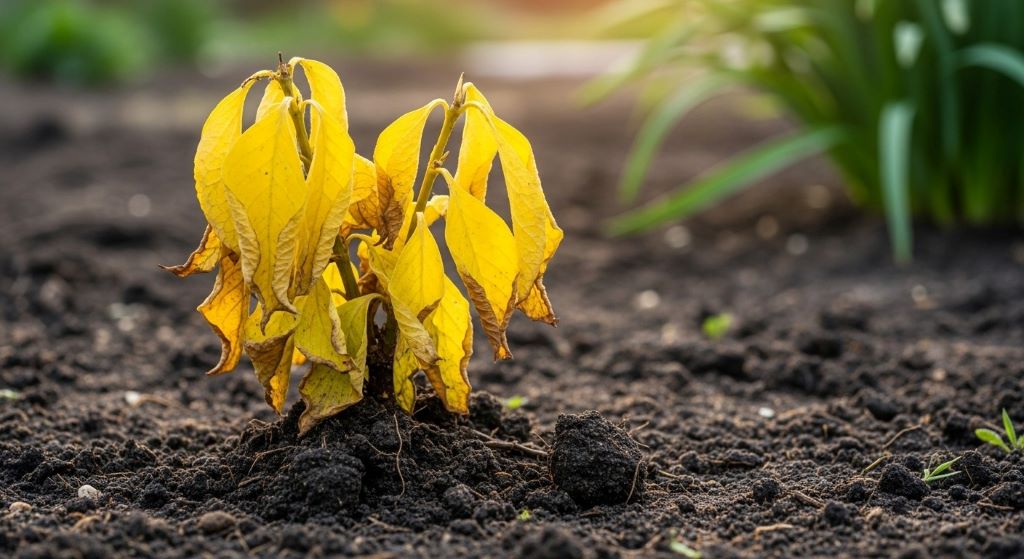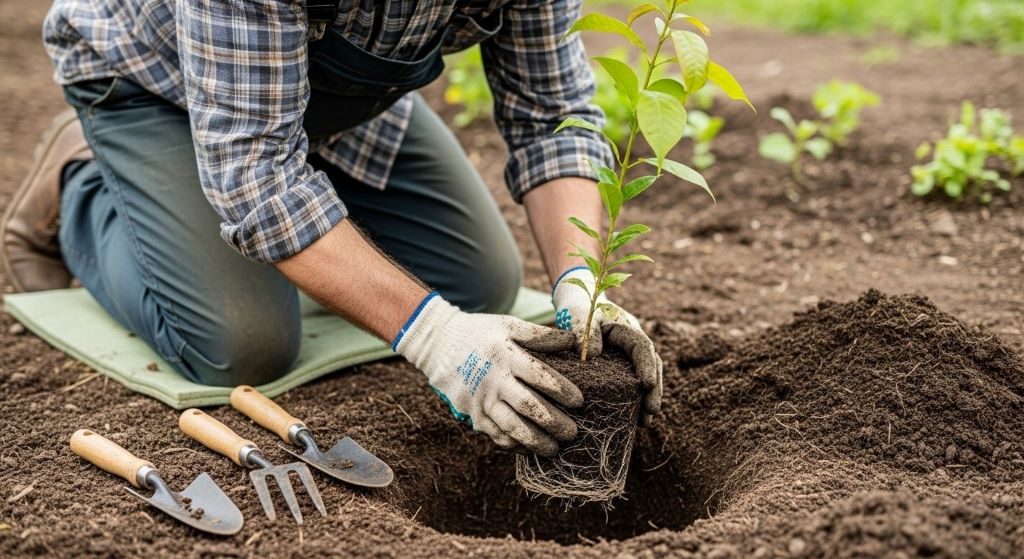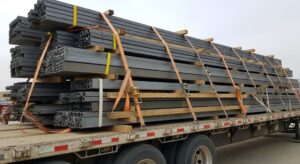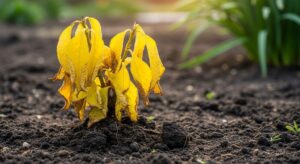Transplant Stress Yellow Leaves Slow Recovery

Moving plants from one location to another can be tricky. Even experienced gardeners face challenges when transplanting. According to experts at The Village Gardener, transplant shock affects nearly every relocated plant to some degree. The good news is that understanding what happens during this stressful period helps you support your plant’s recovery.
When you move a plant, its root system experiences trauma. This disruption affects the plant’s ability to absorb water and nutrients effectively. Consequently, you may notice yellowing leaves and stunted growth. These symptoms indicate your plant is struggling to adjust to its new environment. Additionally, the recovery process can take weeks or even months, depending on the plant species and care provided.
Many gardeners wonder why do yellow leaves grow slowly after transplanting. The answer lies in the plant’s energy allocation. When roots are damaged, the plant redirects energy toward survival rather than growth. Therefore, new leaf development slows down significantly while the plant focuses on reestablishing its root system.
Understanding Transplant Shock
Transplant shock occurs when plants experience stress from being moved. The severity depends on several factors. Root damage during the move plays a major role. Plants with extensive root systems suffer more trauma than those with compact roots. Furthermore, environmental changes between the old and new locations can intensify the shock.
Temperature differences affect transplanted plants significantly. A plant moved from a greenhouse to an outdoor garden faces adjustment challenges. Light levels also matter greatly. Moving a shade-loving plant into direct sunlight causes immediate stress. Similarly, soil composition changes can confuse a plant’s root system.
Water availability shifts create additional complications. Different soils retain moisture differently. Your plant may experience drought stress even with regular watering if the new soil drains faster than the old one. Conversely, overwatering becomes easier in soil that holds moisture longer.
Why Yellow Leaves Appear After Transplanting
Yellowing leaves signal nutrient deficiency or stress. During transplant shock, damaged roots cannot absorb nutrients efficiently. The plant begins breaking down chlorophyll in older leaves. This process releases stored nutrients that travel to newer growth and vital organs. Essentially, the plant sacrifices older foliage to survive.
Nitrogen deficiency commonly causes yellowing. This essential nutrient supports leaf development and maintains green color. When roots struggle to absorb nitrogen from soil, leaves turn yellow from the bottom up. However, transplant shock can mimic various nutrient deficiencies, making diagnosis challenging.
Water stress contributes significantly to yellowing. Damaged roots cannot take up enough water to support all leaves. The plant responds by allowing lower leaves to yellow and drop. This reduces the total leaf area requiring water. Meanwhile, the plant protects newer growth at the top.
According to research from University of California Agriculture and Natural Resources, proper transplanting techniques can reduce shock by up to 50 percent. Their studies show that careful root handling makes a tremendous difference in recovery time.
The Slow Growth Phenomenon
Slow growth after transplanting frustrates many gardeners. However, this response is completely natural. Your plant is not being lazy or difficult. Instead, it is wisely allocating limited resources to the most critical functions.
Root regeneration takes priority over leaf production. Without a healthy root system, the plant cannot support new growth anyway. Therefore, all available energy goes underground. You cannot see this progress, but it is happening beneath the soil surface.
Photosynthesis decreases when leaves turn yellow. Less chlorophyll means reduced ability to convert sunlight into energy. This creates a challenging cycle. The plant needs energy to grow new roots, but damaged leaves produce less energy. Consequently, everything slows down until the root system recovers sufficiently.
Cell division rates decrease during stress periods. Plants produce hormones that slow growth processes to conserve resources. This survival mechanism protects the plant from further damage. Growth resumes once the plant senses stability in its environment.
Supporting Your Plant’s Recovery
Patience remains your most valuable tool during transplant recovery. Resist the urge to over-fertilize or overwater. These actions often cause more harm than good. Instead, provide consistent, moderate care while your plant adjusts.
Water management requires careful attention. Check soil moisture regularly by inserting your finger two inches deep. Water only when the soil feels dry at this depth. Deep, infrequent watering encourages deeper root growth. Shallow, frequent watering keeps roots near the surface where they are more vulnerable.
Avoid fertilizing immediately after transplanting. Damaged roots cannot process nutrients effectively. Excess fertilizer can burn stressed roots, worsening the situation. Wait at least four to six weeks before applying any fertilizer. Then start with half the recommended strength.
Provide appropriate light conditions for your plant species. Too much direct sunlight stresses a recovering plant. Consider providing temporary shade for the first few weeks. Gradually increase sun exposure as the plant shows signs of recovery.
Mulching helps maintain consistent soil moisture and temperature. Apply a two to three inch layer around the plant base. Keep mulch away from the stem to prevent rot. Organic mulches also improve soil quality as they decompose.

Timeline for Recovery
Recovery timelines vary significantly among plant species. Small herbaceous plants may recover in two to four weeks. Larger shrubs typically need six to eight weeks. Trees can take an entire growing season or longer to fully recover from transplant shock.
Signs of recovery include new growth emergence. Fresh green shoots indicate the plant has reestablished sufficient root function. Existing yellow leaves may remain, but new growth should appear healthy. Additionally, the rate of yellowing should slow or stop completely.
Increased firmness in stems and leaves suggests proper water uptake. Wilted or droopy plants lack adequate hydration. As roots heal and grow, the plant regains its structural integrity. This improvement happens gradually over several weeks.
Do not judge recovery solely by above-ground appearance. Significant root development occurs before visible growth resumes. Your plant may look unchanged for weeks while building a strong foundation underground. Trust the process and maintain consistent care.
Preventing Severe Transplant Shock
Preparation minimizes transplant shock severity. Water plants thoroughly the day before moving them. Hydrated plants tolerate root disturbance better than dry ones. This simple step significantly improves outcomes.
Dig an appropriately sized root ball when moving plants. Larger root balls preserve more of the root system. However, balance this with the weight you can safely handle. A smaller, carefully handled root ball beats a large, roughly managed one.
Timing matters considerably for transplant success. Spring and fall provide ideal conditions in most climates. Plants experience less heat stress during these moderate seasons. Avoid transplanting during extreme weather whenever possible.
Prepare the new location before digging up your plant. Have the hole ready and amendments mixed. This minimizes the time roots spend exposed to air. Quick transplanting reduces stress significantly compared to lengthy delays.
Conclusion
Transplant shock causes yellow leaves and slow growth in relocated plants. This natural response occurs as plants redirect energy toward root recovery. Understanding this process helps you provide appropriate care during the critical adjustment period. Moreover, patience and consistent moderate care support successful recovery better than intensive interventions.
Remember that yellow leaves and slow growth are temporary setbacks. Most plants recover fully with proper support. Focus on maintaining steady moisture levels, avoiding fertilizer initially, and providing appropriate light conditions. Your plant will reward your patience with renewed vigor once its roots reestablish themselves in their new home.
Frequently Asked Questions
How long does transplant shock typically last?
Transplant shock usually lasts two to four weeks for small plants. Larger shrubs and trees may take six weeks to several months for complete recovery. The timeline depends on plant size, root damage extent, and care quality during recovery.
Should I remove yellow leaves from a transplanted plant?
Leave yellow leaves attached unless they are completely brown and crispy. The plant is still extracting nutrients from partially yellow leaves. Removing them prematurely forces the plant to break down healthy tissue instead.
Can I fertilize a plant with yellow leaves after transplanting?
Wait at least four to six weeks before fertilizing a newly transplanted plant. Damaged roots cannot absorb nutrients efficiently and may suffer fertilizer burn. Focus on proper watering first, then introduce diluted fertilizer gradually.
Will all the yellow leaves turn green again?
No, yellow leaves will not regain their green color. However, new growth should emerge healthy and green once the plant recovers. The yellowed leaves will eventually drop naturally as the plant produces new foliage.
How much water does a transplanted plant need?
Water when the top two inches of soil feel dry. Newly transplanted plants need consistent moisture but not waterlogged conditions. Check soil daily for the first two weeks, then adjust frequency based on weather and soil drainage.
Related topics:








